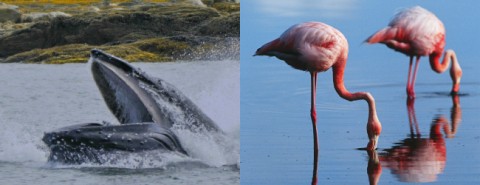Headed toward Christ: The grand narrative of evolution

Twenty-five years ago, Stephen Jay Gould published Wonderful Life, a study of the Burgess Shale, a limestone quarry in western Canada that contains the fossil remains of a remarkably diverse group of sea creatures living during the Cambrian explosion of animal life in the oceans 530 million years ago. Gould argued that the immense variety of life forms making up the Burgess Shale, and their sharp differences from those inhabiting the oceans today, demonstrates the utter randomness and unpredictability of evolution. In a famous image, Gould asked us to consider what would happen if we could rewind the tape of life back to the Cambrian period and let it run again. Replaying the tape, he contends, would yield an entirely different set of organisms than what developed the first time. There is no grand plan, in other words, to evolution. There is no music that we are predestined to hear. Humanity is an accident. Evolutionary science can discover “the essence of history,” and “its name,” Gould proclaimed, “is contingency.”
The view that the history of life on earth—which includes, importantly, human history—has no overarching plot, direction, or goal is widespread among evolutionary biologists and contemporary intellectuals. The 19th century held sweeping visions of inevitable historical progress and a glorious destiny for the human race. But the unprecedented violence and horror of the 20th century has undermined such confidence.
After the devastation of World War I, artists and intellectuals in the West began to despair of locating objective meaning to history as a whole and sought meaning elsewhere: in private life, or in aesthetic experience, or in modest political efforts. Secular philosophers like Karl Popper decried any “belief in historical destiny” as “sheer superstition.” Critics of Western colonialism pointed to how the idea of progress was used to justify Western domination of supposedly backward cultures and races. Christian theologians like Karl Löwith and Reinhold Niebuhr engaged in sharp polemics against modern philosophers of history, accusing them of having an unwarranted confidence in human reason that blithely ignored the darker forces of human nature. “There never has been and never will be an immanent solution of the problem of history,” Löwith wrote, “for man’s historical experience is one of steady failure.”





